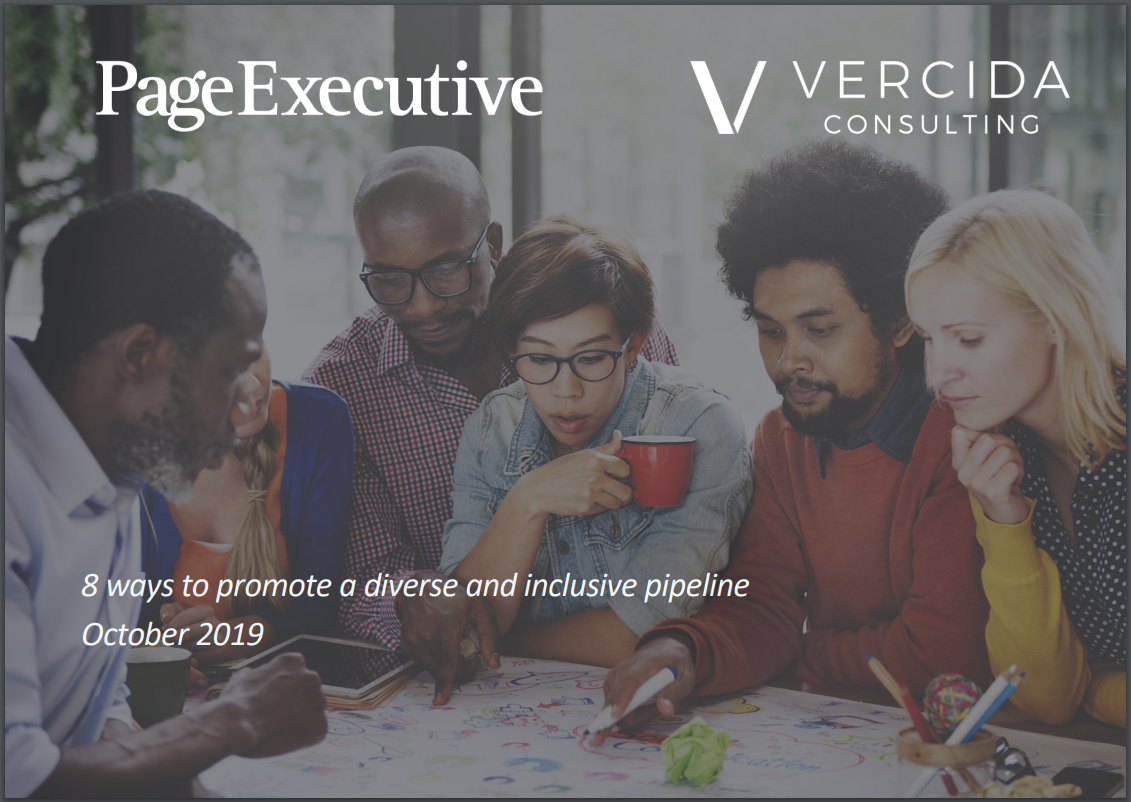Looking to hire your next leader?
Get in touch with one of our consultants now to discuss your leadership talent requirements.


The impacts of biases in the workplace can cause ripple effects right throughout the recruitment process, but they are particularly detrimental to an organisation’s talent pipeline. Diversity and inclusion (D&I) have never been higher on the agenda for business leaders than they are today. Ensuring a diverse and inclusive pipeline of talent is key to ensuring the longevity of any D&I initiative and securing the very best professionals.
To ensure that we can best advise our clients and support them in achieving their D&I initiatives we regularly host D&I-focused events, and work with external experts to provide comprehensive insight and guidance. At one of our recent D&I events, which explored the impact of bias at work, ethnicity pay reporting, and ways to create an inclusive workplace, we partnered with Dan Robertson, Director at VERCIDA Consulting.
As a key aspect in the future success of organisations, we asked the question: how do you future-proof your talent pipeline? In this article, Dan suggests eight ways for businesses to build diverse talent pipelines that will boost the employee value proposition and support an inclusive culture.
In building a diverse and inclusive pipeline, it is crucial to ensure that biases are avoided wherever possible. By using data to assess trends in decision-making, you can identify the number of hires being made by diverse groups and the demographics of high performers.
It is also possible to assess the inclusivity of your culture using key metrics around retention rates and the participation of your employees at work events.
Identifying any pain points or areas where biases are influencing the diversity of incoming talent and promotions, is key in implementing the right changes.
A practice that was started in the White House during Barack Obama’s presidency; amplification comprises several areas of intervention. The goal is to ensure that contributions from minority groups are amplified by their peers to ensure they are heard.
By championing such a principle in your organisation you are ensuring that diverse groups are given the platform to have their voices heard, which also means you benefit from equal contribution from all key stakeholders in your business. Amplification is key to an inclusive culture and positively influences business outputs.
Looking past the benefit of appealing to great employees and boosting your employer value proposition, agile working fosters trust among employees, ensures output is rewarded, and supports every individuals’ differences by allowing them to work around what is important to them.
Workplace barriers to participation extend to working arrangements, and agile working is one solution that allows professionals to work as and how they need to.
When looking at building your diverse and inclusive pipeline, sponsors are key. The difference between a mentor and sponsor is that sponsors not only provide guidance, they also make their peers visible to leaders within the company. In other words, they actively sponsor the careers of those around them.
This might mean highlighting their work, promoting their ideas and acknowledging their skills. Sponsors act as business partners to their peers, driving them to success and facilitating the opportunity for promotion where possible.
In an inclusive working culture, employees will feel comfortable bringing their whole selves to work, which also means putting forward new ideas. What is crucial here is ensuring that psychological safety is present.
Employees feeling comfortable and safe in being themselves at work, ensures that they feel able to make mistakes without worrying that it will limit them in their careers. If your people do not fear that they will be rejected due to their differences, or for having different ideas, then you will get the most out of them in the workplace.
Integrity is a trait that has been identified as a key quality that professionals seek in their leaders. Integrity also helps promote cultures of belonging.
Through authenticity, challenging biases, and promoting a speak-up culture, you demonstrate integrity. As a leader, demonstrating and truly embracing this quality builds trust which, in turn, builds psychological safety.
Gathering insights into the experiences that minority groups have within your organisation is a simple yet crucial step in improving the diversity and inclusivity of your business. Through a deeper understanding of your workforce, you will develop your empathy and emotional intelligence, which means as a leader, you will better relate to the diverse groups of individuals in your organisation.
Bringing about change can be challenging, but establishing clear metrics to drive your D&I agenda can be instrumental in making strides to achieve your objectives.
When creating your metrics, focus on pay, recruitment, retention, advancement, and representation within your organisation.
If you would like to have a confidential discussion about how we can support your D&I agenda, or would like to explore your career options, get in touch with your local Page Executive office today.
Helen Schwarz, Partner Page Executive
To explore the eight steps to building your talent pipeline in further detail, with a focus on how to build trust, ways to develop insight, and how to establish a set of metrics to drive change, you can download the full VERCIDA Consulting guide here.

Get in touch with one of our consultants now to discuss your leadership talent requirements.

Choose your country from the list below to complete the brief form:


